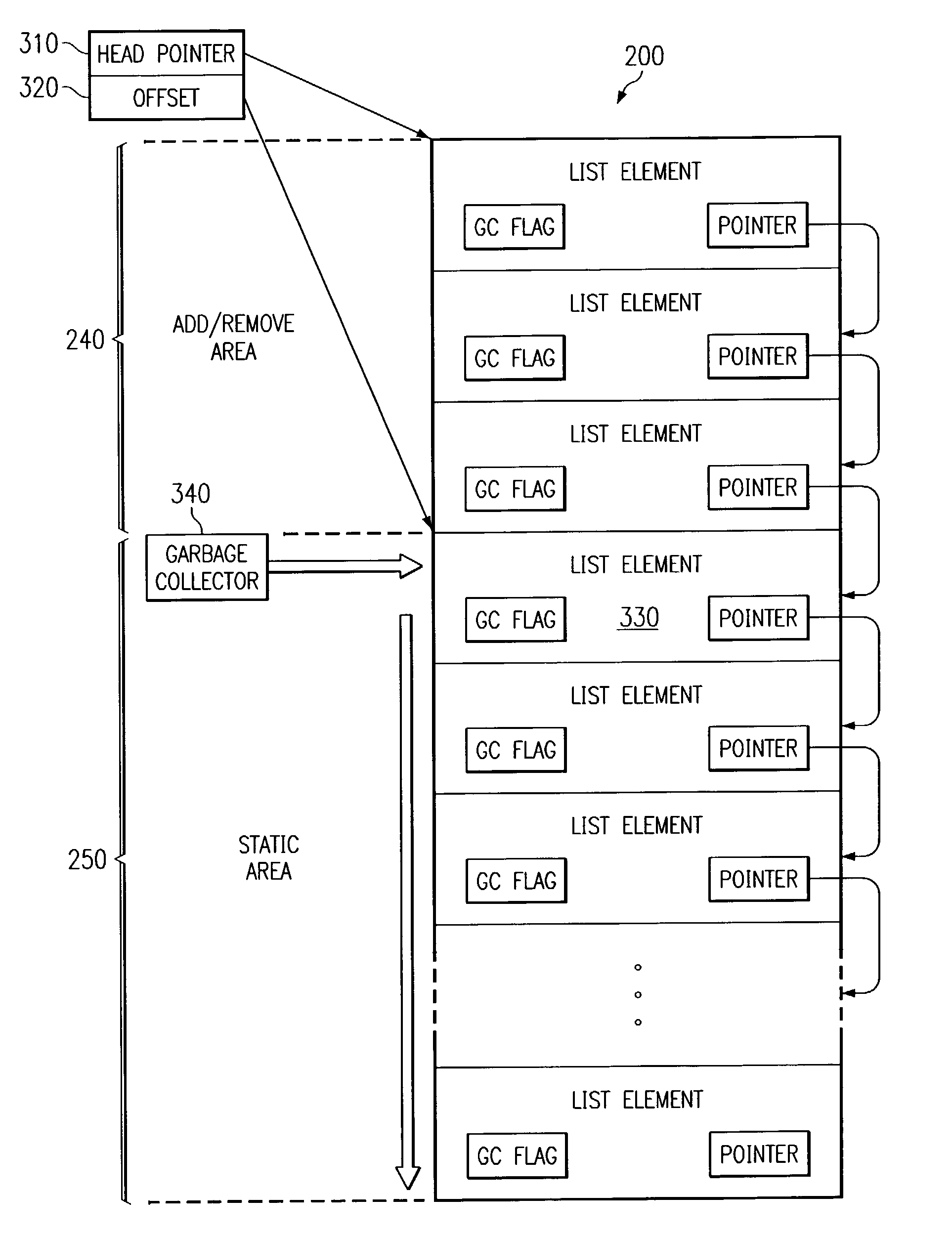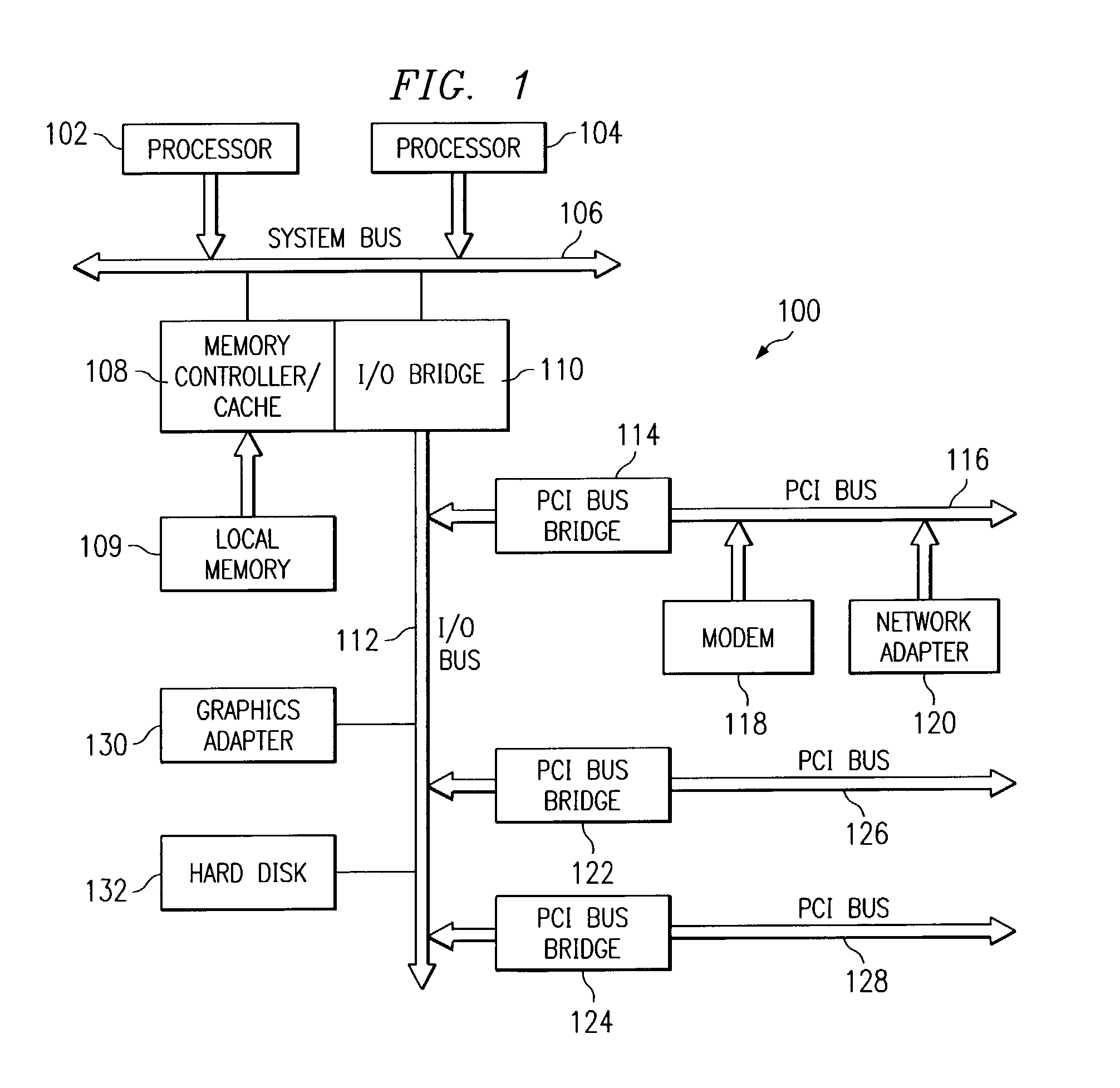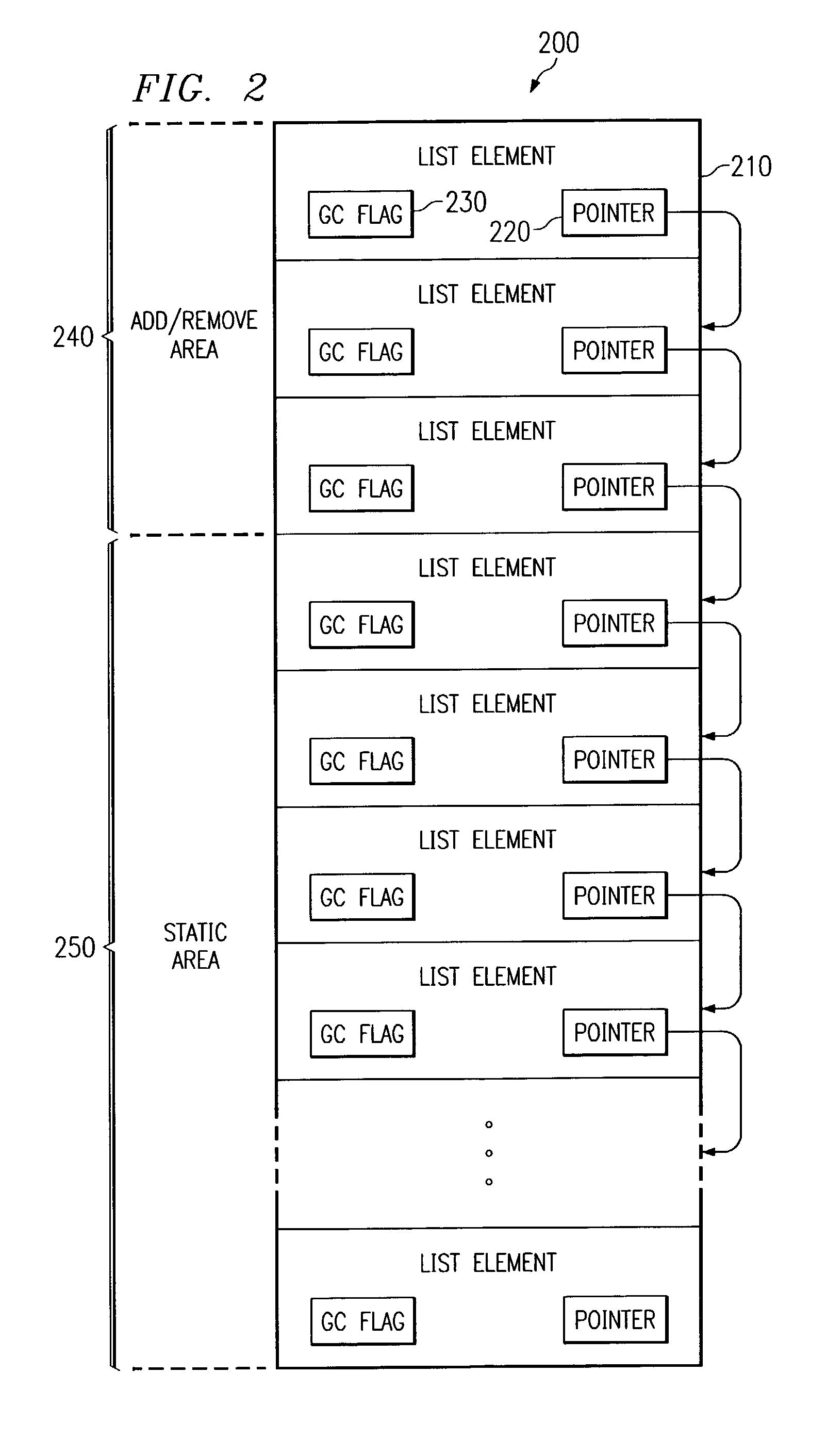Apparatus and method for removing elements from a linked list
a technology of linked list and removal method, applied in the direction of memory address/allocation/relocation, program control, instruments, etc., can solve the problems of increasing the number of processors, affecting the action of one processor on the linked list element, and prohibitively slow multiprocessor use of the lis
- Summary
- Abstract
- Description
- Claims
- Application Information
AI Technical Summary
Benefits of technology
Problems solved by technology
Method used
Image
Examples
Embodiment Construction
[0022]The present invention provides methods and apparatus for removing elements from a linked list in a multiprocessor system such that processors may continue to access elements of the linked list during removal of other elements of the linked list. The present invention may be implemented on any multiprocessor system, whether such processors are located in the same or different computing devices. Thus, the present invention may be used in a stand alone computing device in which multiple processors are present, or in a distributed data processing system in which one or more processors are present in remotely located devices. For ease of explanation, the present invention will be described in terms of a single computing device in which multiple processors are present. However, no limitation to the environment in which the present invention may be implemented is intended or implied by the selection of this illustration of the present invention.
[0023]FIG. 1 is an exemplary diagram il...
PUM
 Login to View More
Login to View More Abstract
Description
Claims
Application Information
 Login to View More
Login to View More - R&D
- Intellectual Property
- Life Sciences
- Materials
- Tech Scout
- Unparalleled Data Quality
- Higher Quality Content
- 60% Fewer Hallucinations
Browse by: Latest US Patents, China's latest patents, Technical Efficacy Thesaurus, Application Domain, Technology Topic, Popular Technical Reports.
© 2025 PatSnap. All rights reserved.Legal|Privacy policy|Modern Slavery Act Transparency Statement|Sitemap|About US| Contact US: help@patsnap.com



